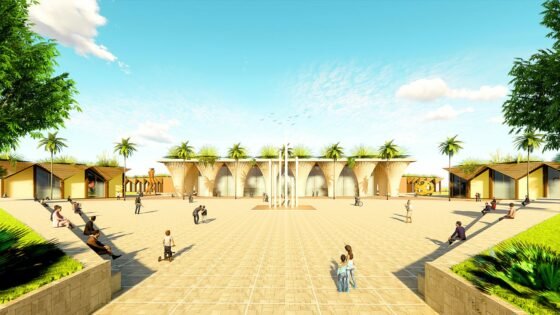
Bridge, house, roofs… What if we replace polluting raw materials with more sustainable materials? This is the idea of several projects carried out in recent years in different cities around the world, each as surprising as the other.
A Dutch bridge… made of flax fibres
On April 22, Earth Day, the inauguration of a new type of bridge near Amsterdam caused a lot of commotion. Its peculiarity? Not concrete, but a structure composed entirely of linen fibers and bioresin. Sensors have been installed on the structure to assess the bridge’s sturdiness over time, especially its ability to withstand inclement weather and vibrations. Behind this innovative project is the Norman company Eco Techni Lin, directed by Thibault Roumier.
Widely used in the textile industry, as well as automotive and sports, flax has the great advantage that it consumes much less and grows independently in many regions, both in Normandy and in the Netherlands. A material that could therefore have a future in the construction sector.
Potato peel glasses frames
Always with a view to opting for more ecological and sustainable materials, others get their sources of inspiration from plants. If we are no longer surprised to wear apple leather or grape skin shoes, know that one day you may come across a piece of furniture or frame made of potato skins.
It was the original idea of two English graphic design students who came up with a coating for furniture whose panel was designed entirely from potato skins. The goal is to offer a greener alternative to MDF, while reducing food waste† An end-of-year project launched in 2019, which eventually became a real company and the birth of the “Chip[s] Board“, on the market to this day. In addition to coatings for furniture, the company now also offers spectacle frames made from potato peelings and a range of translucent pure or fiber reinforced bioplastics for fashion and interior decoration.
chocolate roofs
It is this year that work should begin to revive the “Cocoa Eco Village”. Located in the town of Pedernales in northwestern Ecuador, this ecovillage project was designed by Italian architect Valentino Gareri, who envisioned buildings designed with recycled cocoa fibers from a 3D printer.
The project, which was carried out in collaboration with the chocolatier Muze and the Avanti association, plans to install a cocoa processing plant to “design new ethical cocoa-based products, highly traceable, that offset the environmental footprint”† The future houses of the eco-village are completely ecologically designed and will also have a roof to collect rainwater, as well as natural ventilation.
(ETX Daily Up)